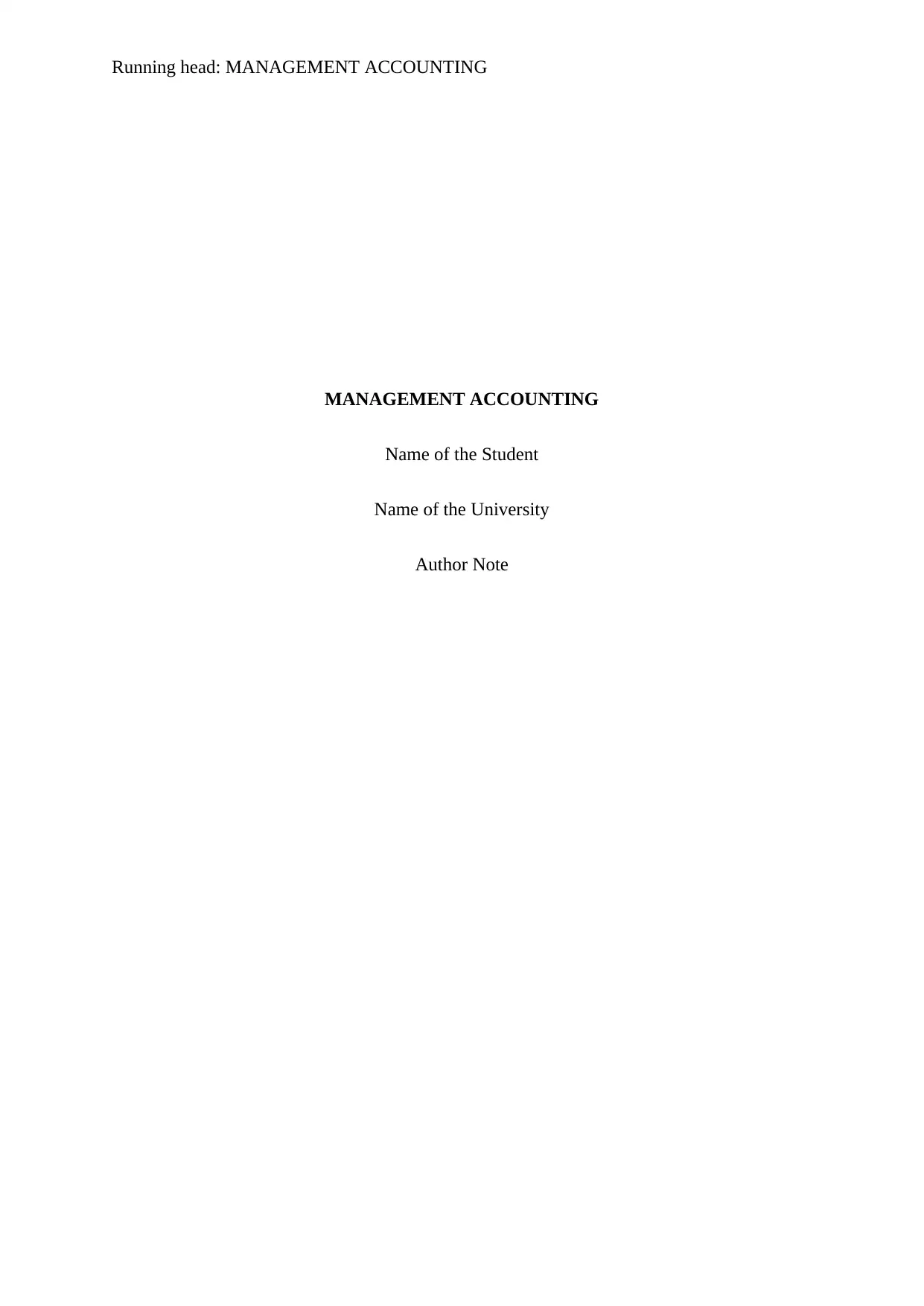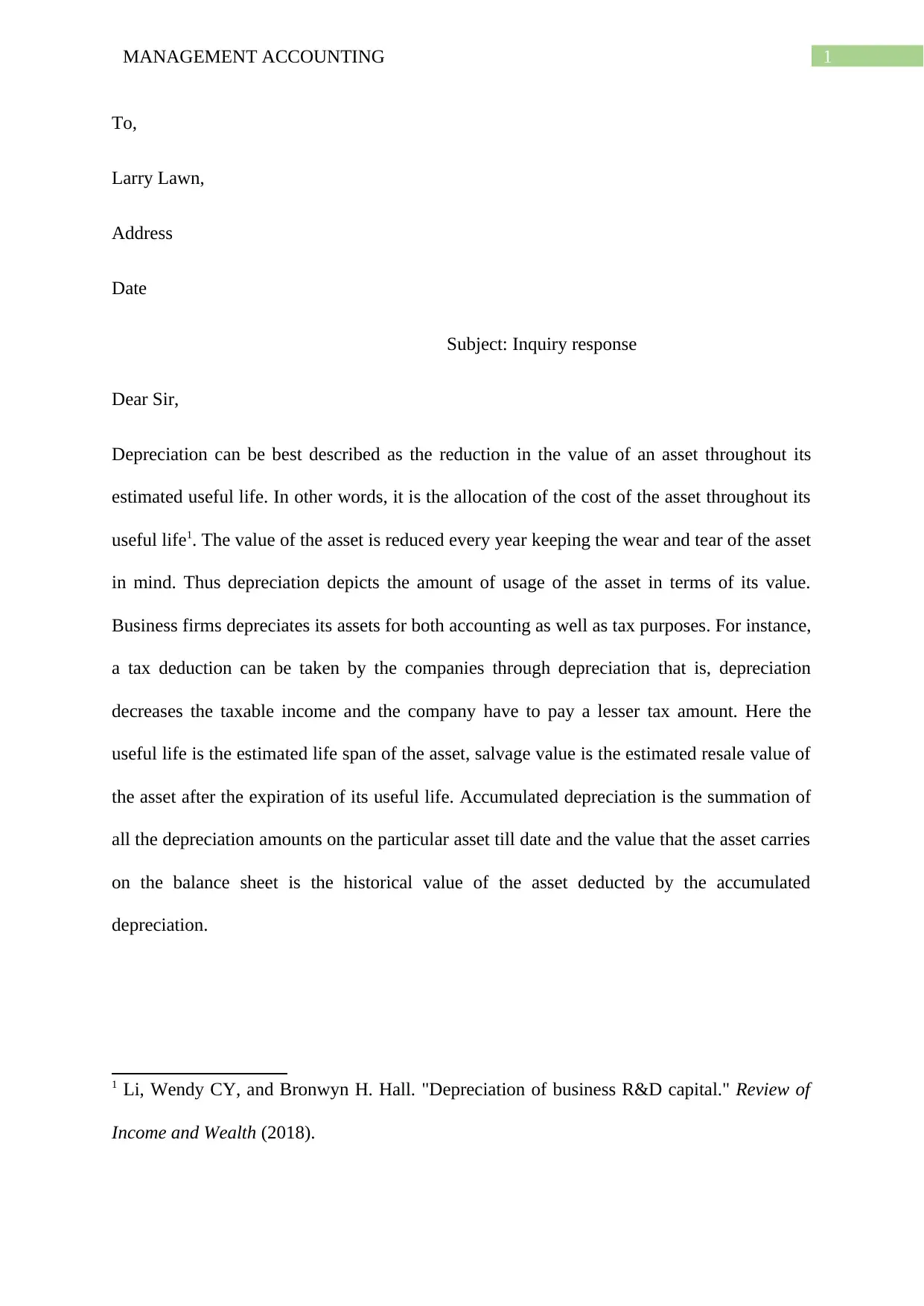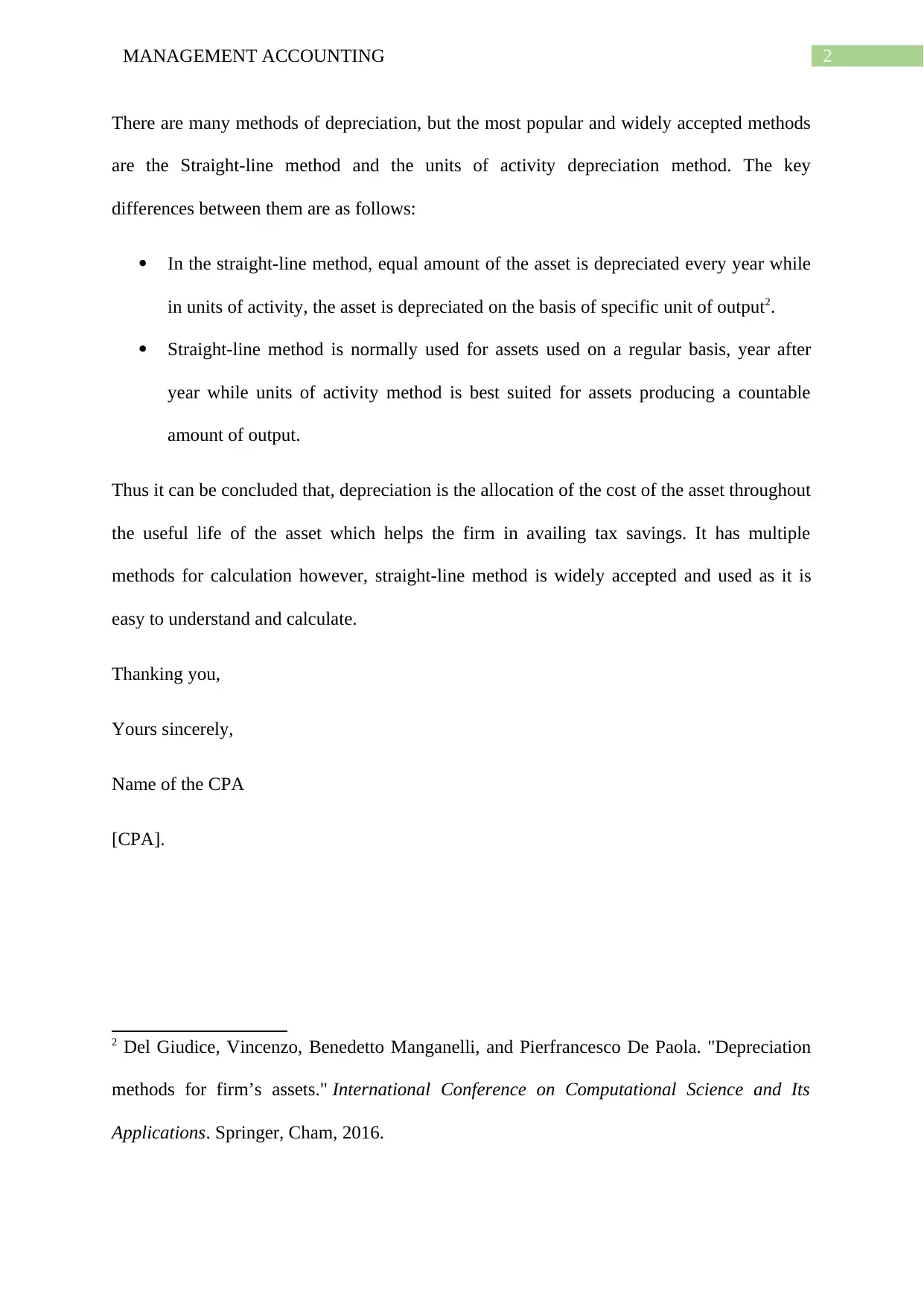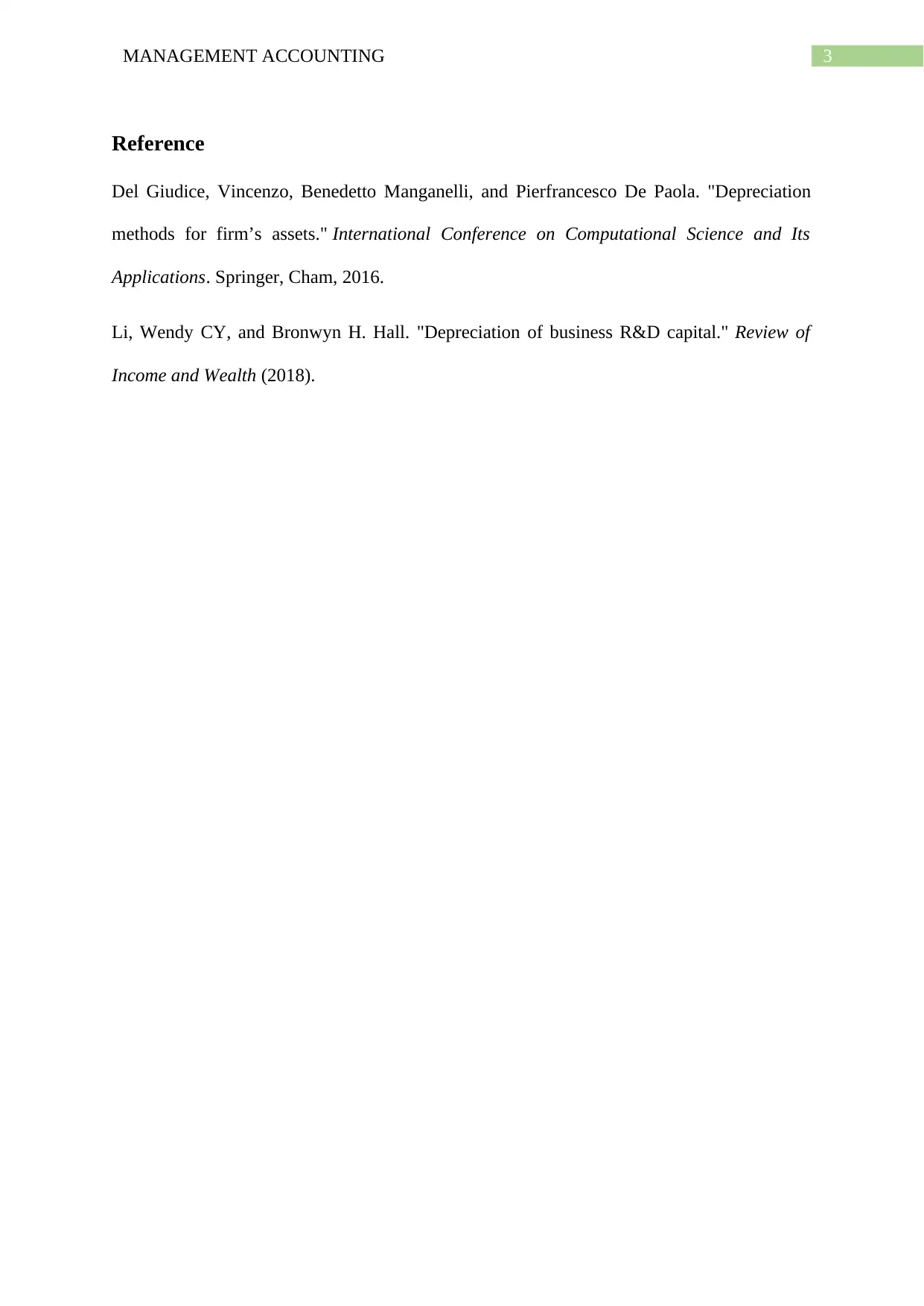Depreciation Methods: Understanding and Applying Accounting Principles
VerifiedAdded on 2022/08/09
|4
|471
|20
Report
AI Summary
This report delves into the concept of depreciation, which is the reduction in the value of an asset over its useful life, and its significance in accounting and taxation. It explains that depreciation allocates the cost of an asset over its lifespan, impacting a company's taxable income and tax liabilities. The report specifically focuses on two primary depreciation methods: the straight-line method and the units of activity method. The straight-line method depreciates an equal amount of the asset each year, while the units of activity method depreciates based on the asset's output. The report highlights the suitability of each method, with the straight-line method being suitable for assets used regularly and the units of activity method for assets producing a countable output. It concludes by emphasizing the importance of depreciation in financial management, highlighting its role in tax savings and asset valuation.
1 out of 4











![[object Object]](/_next/static/media/star-bottom.7253800d.svg)